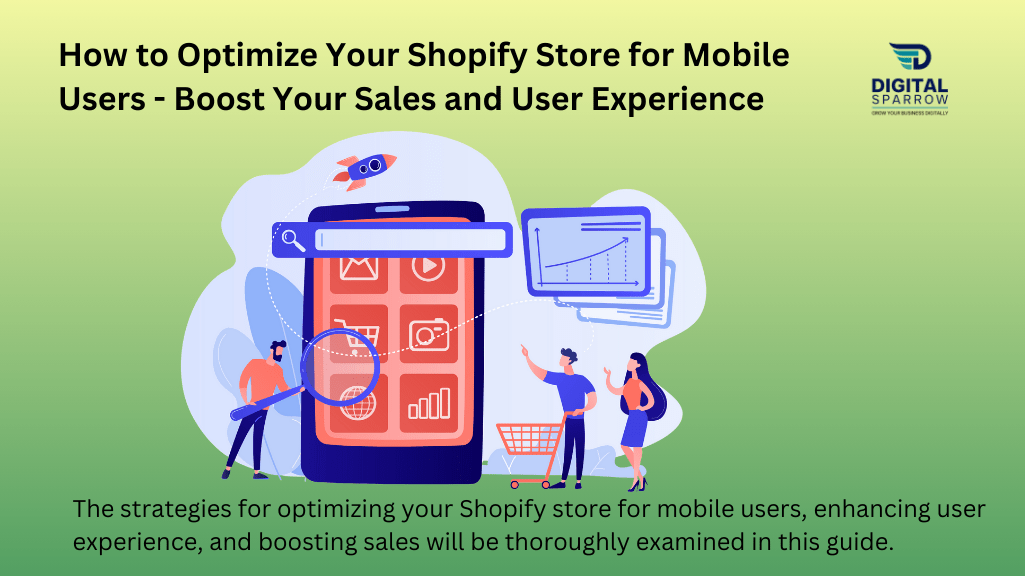The world of E-commerce continues to expand at a Rapid pace, and mobile optimization for a Shopify store is more essential than ever. As mobile devices account for over half of all global web traffic, Shopify store owners must make their stores mobile-friendly to increase conversions and improve the user experience. In this in-depth guide, we will go over how to Effectively optimize your Shopify store for mobile, specifically your mobile site speed, mobile user navigation, Shopify mobile payments, mobile user engagement, e-commerce mobile optimization, mobile SEO for Shopify, and ways to increase mobile traffic. We will consider everyone to make sure your Shopify mobile shop is fully mobile optimized and perfectly performant to make it reach as many users as possible.
Understanding the Importance of Mobile Shopify Optimization
The optimization of a Shopify store for mobile users involves several key benefits:
- Increased Traffic and Sales: A significant amount of e-commerce traffic originates from mobile devices. Ensuring a mobile-friendly Shopify store can attract and retain more visitors, leading to higher conversion rates and sales.
- Improved User Experience: A seamless and intuitive mobile experience keeps users engaged and encourages repeat visits. Poor mobile performance can drive potential customers away, impacting the store’s reputation and profitability.
- Higher Search Engine Rankings: Search engines, particularly Google, prioritize mobile-friendly websites in their rankings. Optimizing for mobile SEO ensures higher visibility and drives more organic traffic to your Shopify store.
- Enhanced Brand Reputation: Providing a smooth and efficient mobile experience enhances your brand’s reputation, fostering trust and loyalty among customers.
Implementing Responsive Design for Mobile Shopify
Responsive design is crucial to ensure that a Shopify store looks and functions well on all devices, regardless of screen size. Shopify offers various responsive themes that automatically adjust to different devices, enhancing mobile user engagement.
Selecting a Responsive Theme
- Responsive Themes: Shopify’s theme store provides numerous options that are inherently responsive and designed to cater to mobile users. Themes such as “Debut” and “Brooklyn” are popular choices due to their mobile-friendly design and flexibility.
Customizing the Theme
- Font Sizes and Button Placements: Customizing the theme involves adjusting font sizes and button placements to suit smaller screens. Larger fonts and well-spaced buttons improve readability and usability on mobile devices.
- Image Scales: Ensuring images scale correctly to fit different screen sizes without compromising quality is essential. This enhances the visual appeal and loading speed of the mobile Shopify store.
Testing Across Devices
- Cross-Device Testing: The Shopify store should be tested on various devices to ensure consistent performance and appearance. Tools like Google’s Mobile-Friendly Test can be used to identify issues and verify mobile compatibility.
Optimizing Mobile Site Speed
Page speed is a critical factor in mobile optimization. Slow loading times can frustrate users and lead to high bounce rates, negatively affecting mobile traffic and sales.
Compressing Images
- Image Compression Tools: Large images can significantly slow down a website. Tools like TinyPNG or Shopify’s built-in image compression feature can reduce image sizes without compromising quality, ensuring faster load times.
Minimizing Code
- Code Optimization: Removing unnecessary code streamlines the site’s performance. Minimizing HTML, CSS, and JavaScript files reduces the amount of data that needs to be loaded, speeding up the site.
Leveraging Browser Caching
- Browser Caching: Enabling browser caching stores frequently accessed data on users’ devices, reducing load times for returning visitors and enhancing the overall user experience.
Using Accelerated Mobile Pages (AMP)
- AMP Technology: Implementing AMP technology creates faster-loading mobile pages. Shopify supports AMP through various apps, ensuring pages load quickly and efficiently on mobile devices.
Creating Mobile-Friendly Navigation for Shopify Mobile Users
Navigation should be intuitive and accessible on mobile devices. A well-designed mobile navigation system enhances user experience and makes it easier for customers to find what they are looking for, thereby boosting mobile sales.
Simplifying the Menu
- Essential Items Only: The menu should include only essential items, organized logically to avoid clutter. Dropdown menus and nested links help organize content without overwhelming users.
Using a Sticky Header
- Sticky Header Implementation: A sticky header keeps the main navigation visible as users scroll down the page, making it easier to navigate back to the main menu or access important links.
Incorporating a Search Function
- Prominent Search Bar: A prominently placed search bar helps users quickly find products or information without navigating through multiple pages, enhancing user engagement and satisfaction.
Ensuring Touch-Friendly Elements in Mobile-Friendly Shopify Stores
Mobile devices rely on touch interactions, so it is important to design elements that are easy to interact with using touch, ensuring a seamless user experience.
Designing Large Buttons
- Button Size and Placement: Buttons and clickable elements should be large enough to be easily tapped with a finger. Proper spacing prevents accidental clicks and enhances usability.
Spacing Interactive Elements
- Adequate Spacing: Ensuring adequate spacing between clickable elements avoids overlap and makes it easier for users to interact with the site, improving overall user experience.
Optimizing Forms
- Simplified Forms: Forms should be simplified for mobile users, with large input fields and easy-to-use dropdowns or selectors. Implementing autofill features speeds up the input process, reducing user frustration.
Streamlining the Checkout Process for Shopify Mobile Store
A cumbersome checkout process can lead to cart abandonment. Streamlining the checkout process for mobile users involves several key strategies to ensure a smooth and efficient experience.
Enabling Guest Checkout
- Guest Checkout Option: Requiring users to create an account can be a barrier to purchase. Allowing guest checkout speeds up the process and reduces friction, encouraging more conversions.
Simplifying Checkout Steps
- Streamlined Checkout: The checkout process should be as straightforward as possible, with minimal steps and clear instructions. Single-page checkouts can be particularly effective in reducing cart abandonment rates.
Integrating Mobile Payment Options
- Mobile Payment Integration: Integrating mobile payment options like Apple Pay, Google Pay, and PayPal provides users with quick and convenient payment methods, enhancing the checkout experience and boosting sales.
Incorporating Mobile-Specific Features for Shopify Optimization
Certain features can be specifically tailored to enhance the mobile shopping experience, ensuring higher engagement and satisfaction.
Push Notifications
- Engaging Notifications: Push notifications can be used to engage users with personalized offers, updates, and reminders. These notifications drive traffic and encourage repeat visits, boosting overall sales.
Location-Based Services
- Personalized Experiences: Location-based services offer personalized experiences based on the user’s geographic location. This includes local promotions, store locators, and region-specific product recommendations.
Augmented Reality (AR)
- AR Integration: AR can create immersive shopping experiences, allowing users to visualize products in their environment. Shopify supports AR through various apps, enhancing the shopping experience and increasing engagement.
Regular Monitoring and Testing for Ongoing Mobile Optimization
Mobile optimization is an ongoing process that requires regular monitoring and testing. Performance should be continually assessed, and adjustments should be made as needed to ensure optimal performance.
Using Analytics Tools
- Analytics for Insights: Tools like Google Analytics track mobile performance and identify areas for improvement. Metrics such as bounce rate, average session duration, and conversion rate should be monitored regularly.
Conducting User Testing
- Usability Testing: Feedback from real users provides valuable insights into the mobile experience. Usability testing identifies pain points and areas for improvement, ensuring a seamless user experience.
Staying Updated with Trends
- Trend Monitoring: Mobile technology and user behaviour are constantly evolving. Staying updated with the latest trends and best practices helps maintain a competitive edge and ensures ongoing optimization.
Conclusion
Optimizing a Shopify store for mobile users is a multifaceted process that requires attention to detail and a user-centric approach. By implementing responsive design, optimizing mobile site speed, creating mobile-friendly navigation, ensuring touch-friendly elements, streamlining the checkout process, incorporating mobile-specific features, and regularly monitoring performance, a superior mobile shopping experience can be achieved. This not only enhances user satisfaction but also boosts sales and fosters long-term customer loyalty. Embracing these strategies will position your Shopify mobile store for success in the increasingly mobile-dominated e-commerce landscape.
Through effective Shopify optimization, the user experience can be significantly enhanced, mobile sales can be boosted, and a competitive edge can be maintained in the ever-evolving world of mobile e-commerce.



Pingback: Ultimate Guide to Google My Business Optimization Services